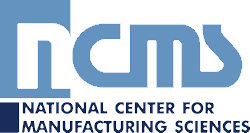Historical Articles
April, 1952 issue of Plating
Washington Orders
Copies of NPA orders and publications may be, obtained from National Production Authority, Washington 25, D. C. or from any of its local offices.
Allotment and DO numbers and symbol—A revised list, of February 29, contains one added symbol, DO-Z 3, for use by the Industrial Expansion Division for metal-working equipment. (See Polishing and Buffing Machines.)
Cadmium—Order M-19 was amended on March 13 to permit a person to use cadmium for any purpose in any one month up to 70 per cent of his average monthly use during the base period. The list of plating uses permitted without restrictions was extended by including electrical connectors for aircraft; anti friction bearings for airframe controls pulleys, rod-ends- and universal joints, and barrels, spiders, and electric and fluid de-icing equipment for aircraft propellers. Cadmium plating may now be used without restrictions to fill orders bearing as part of the DO symbol the letters A, B, C, or E followed by a digit, or Z-2.
Lead—All use restrictions were removed on March 3 by amendment to Order M-38. Consumers may now carry a 60-day inventory. The reporting requirements are retained. Lead allocations have been made for a 3-month period under order M-76.
Consumers who required additional lead over the amounts allocated for March were permitted to draw upon their advance allocations for April and May, according to a NPA announcement of March 13.
Estimated demand for lead during 1952 is about 1,200,000 tons, estimated possible total supply, 1,300,000 tons.
List of Basic Material, and Alternates—Issue No. 5, dated March 3, makes several changes from the previous issue. Among the metals, lead, which was classified as “most critical” in Group I, “In Short Supply”, has been moved to Group II, “In Approximate Balance”. Zinc remains in Group I, but is no longer “most critical”. Bismuth and cadmium have been moved from Group II to Group III, “In Fair to Good Supply”.
Among chemicals, nitric acid, plastic Nylon and polytetrafluorethylene were moved from Group I to Group II. Formaldehyde is now found in Group III instead of Group II.
Nickel—Order M-80 was amended on March 12. Nickel anodes were included in the definition of “alloy products”. The method by which a melter or processor obtains and distributes nickel anodes and nickel salts to a customer was amended. Makers of kitchen tools on March 5 asked NPA to permit the use of nickel for plating metals that come in contact with food, as on parts for slicing machines and meat choppers.
Polishing and buffing machines—According to Revised CMP Reg. 6, Dir. 5, dated March 6, 1952, no person shall apply a DO-U4 rating to a delivery order for a metal-working machine. Procedures for revalidation of such ratings-and their conversion to DO-Z3 ratings are given.
Polytetrafluorethylene—Schedule 2 to Order M-45 on allocation of “Teflon” was revoked on February 20.
Sulfuric acid—Order M-94, as amended on February 28, requires consumers of 20 short tons (basis 100 per cent H2SO4) for any one end use to make several monthly reports to the NPA.
Zinc—Order M-9 was revised on March to include the provisions of Orders M-15 and M-37, which were revoked on the same date. Allocations may now be made on either a monthly or a quarterly basis. Applications for allocations must be filed not later than the l5th day of the month preceding the month or quarter in which delivery is sought. Exemptions from the latter provision remain unchanged.

